The Goldmark Cultural Center’s John H. Milde Gallery is proud to present “An Artist’s Walk: Ceramic Art by Barbara Frey”. This exhibition of handbuilt, wood-fired porcelain vessels by ceramicist Barbara Frey is on display from 28 October 2022 to 25 November 2022.
A reception will be held for the exhibition on Saturday, 12 November, from 1.00pm to 3.00pm during the Goldmark Cultural Center’s November Art Walk.
About the Exhibition
There are two distinct types of works represented in the exhibition: constructed vessels and tumblers. Inspired by rocks from Lake Ontario, the multipart vessels are assembled from various thrown and handbuilt parts. Actual rocks are used as press molds in the forming process. “Walk” and “Fossil” tumblers have textured and press-molded surfaces created using natural and manufactured found objects that the artist collects during her walks.
The surfaces that result from the wood firing process show a degree of natural variation and modulated color that is in keeping with the organic quality of the forms. The overall theme of responsiveness to the natural environment unifies the exhibition.
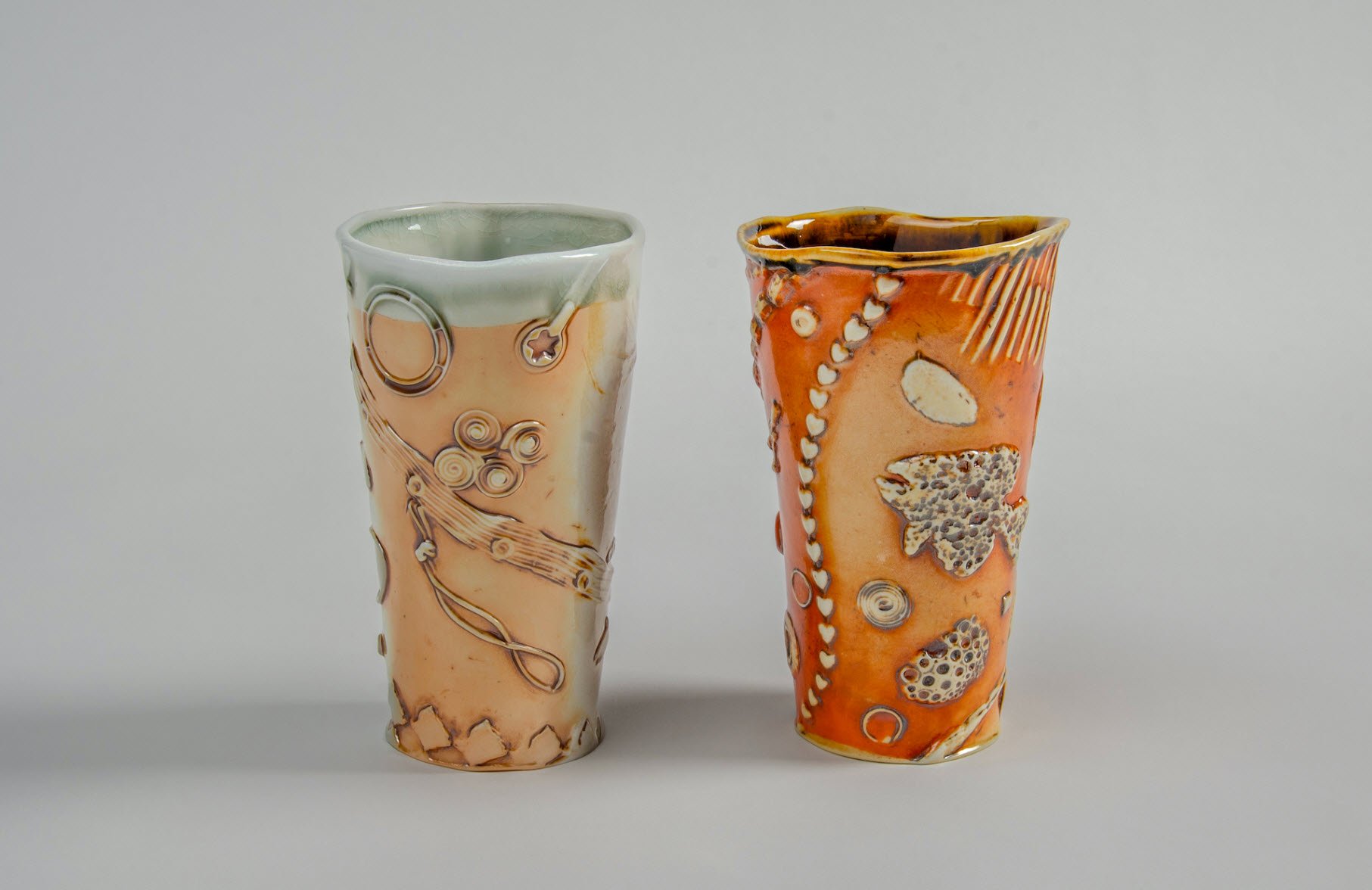
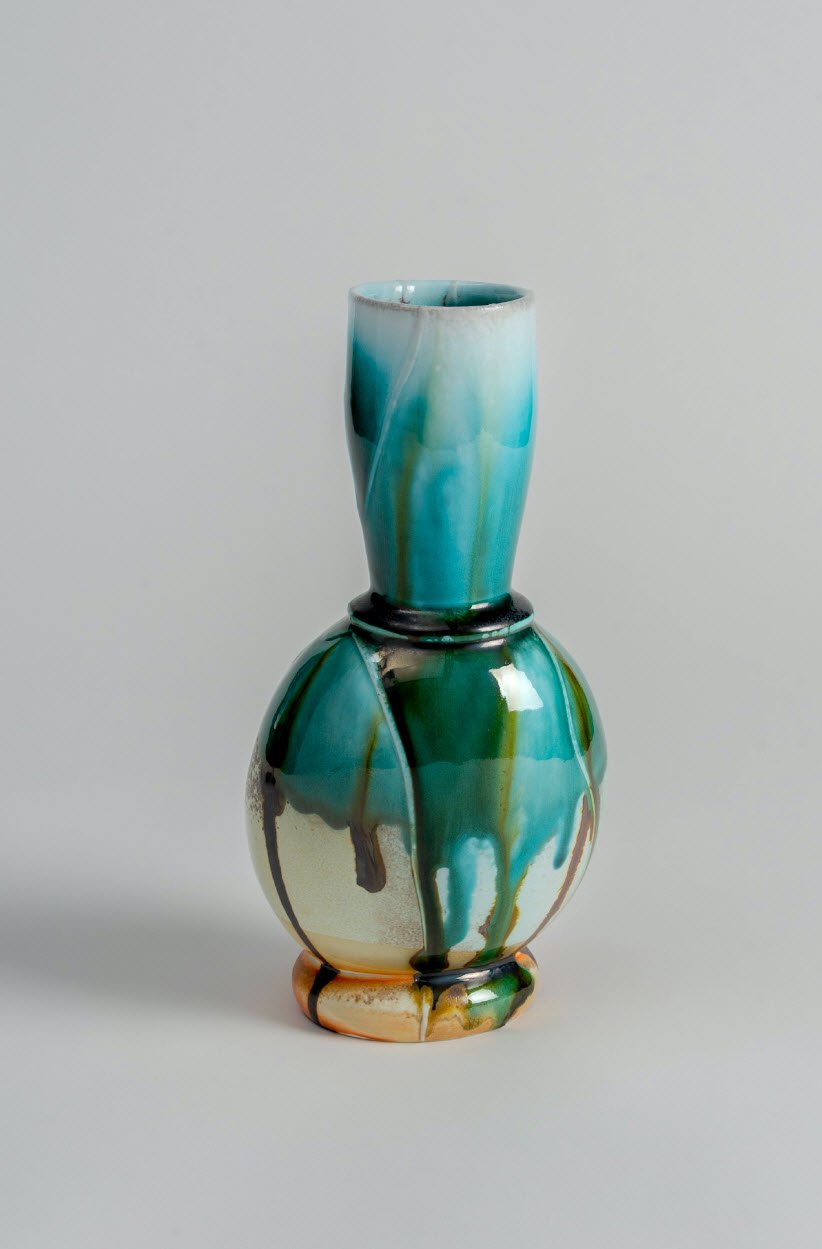
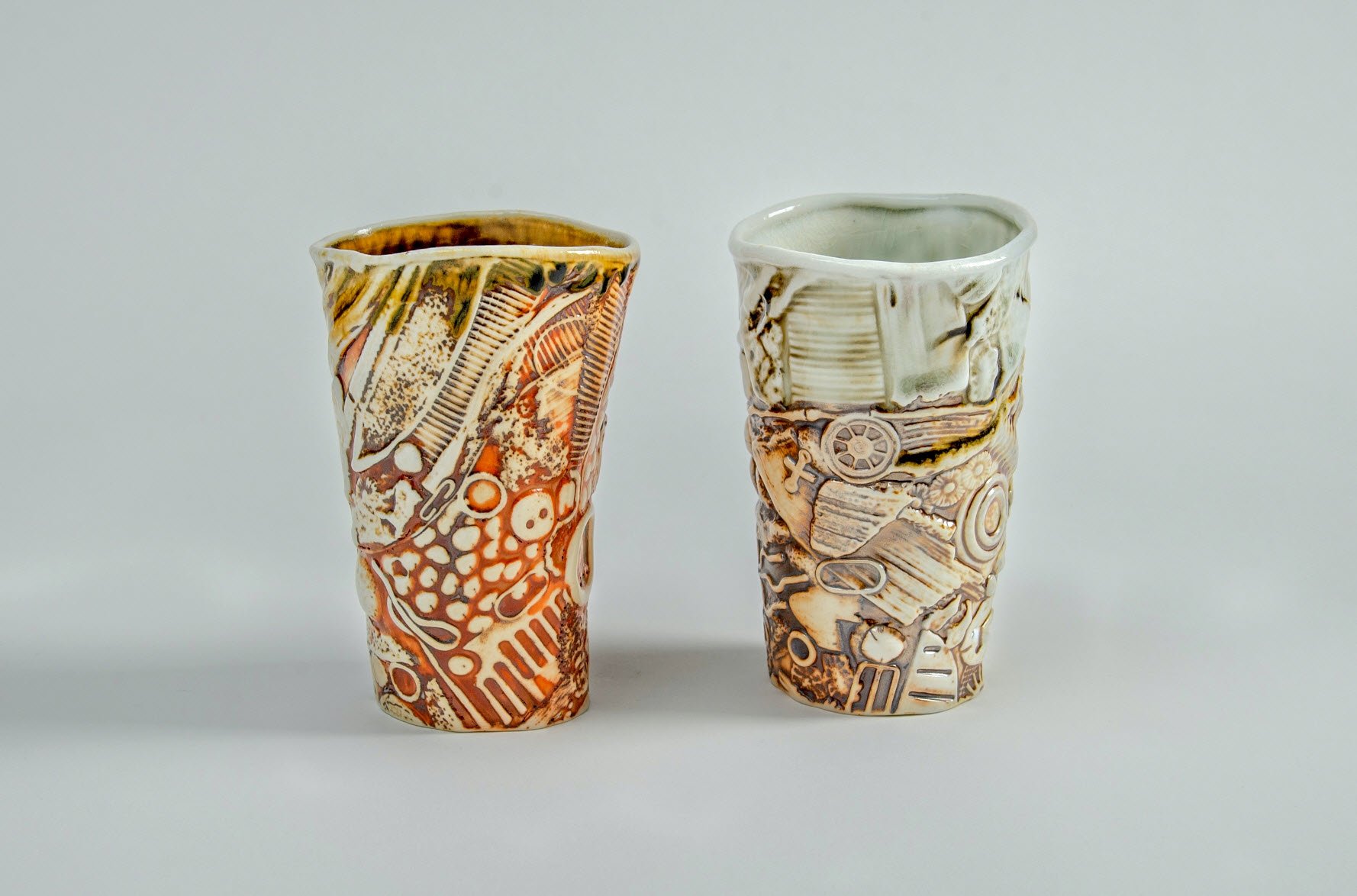

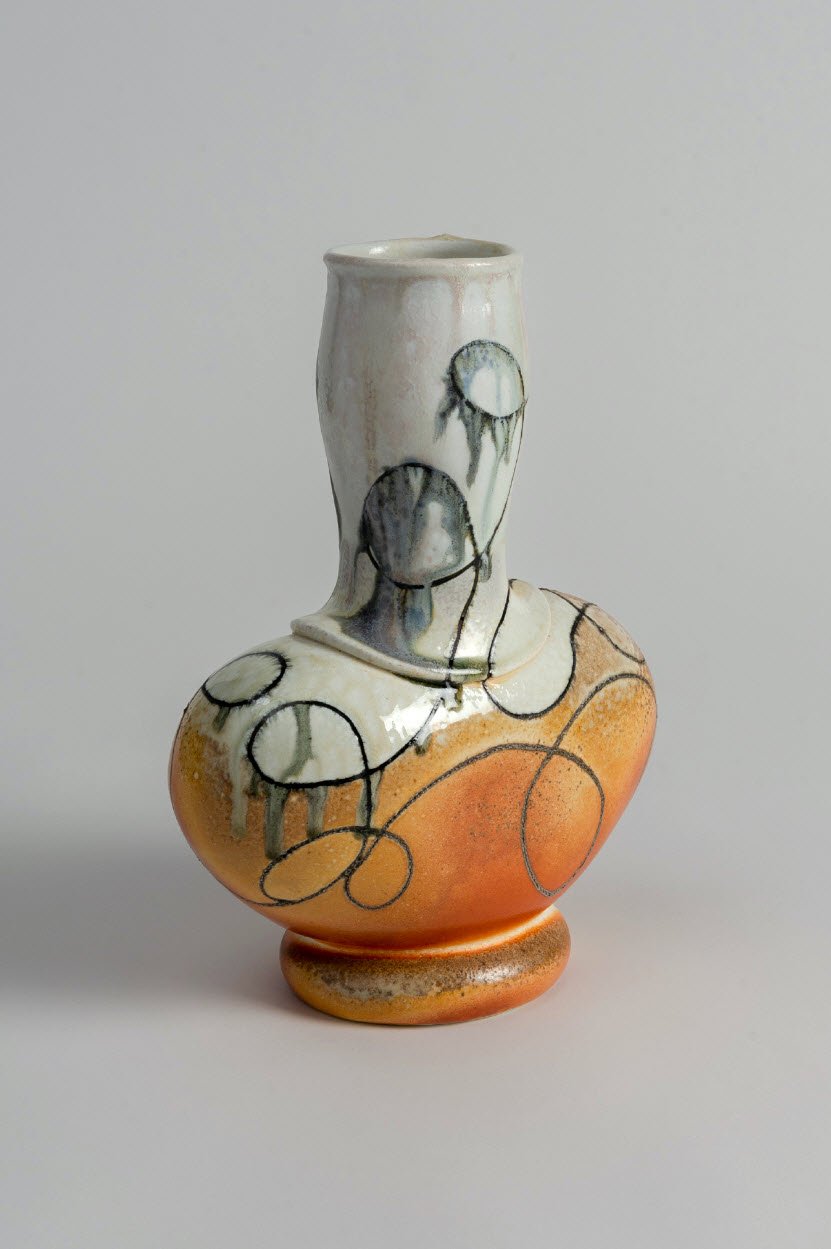
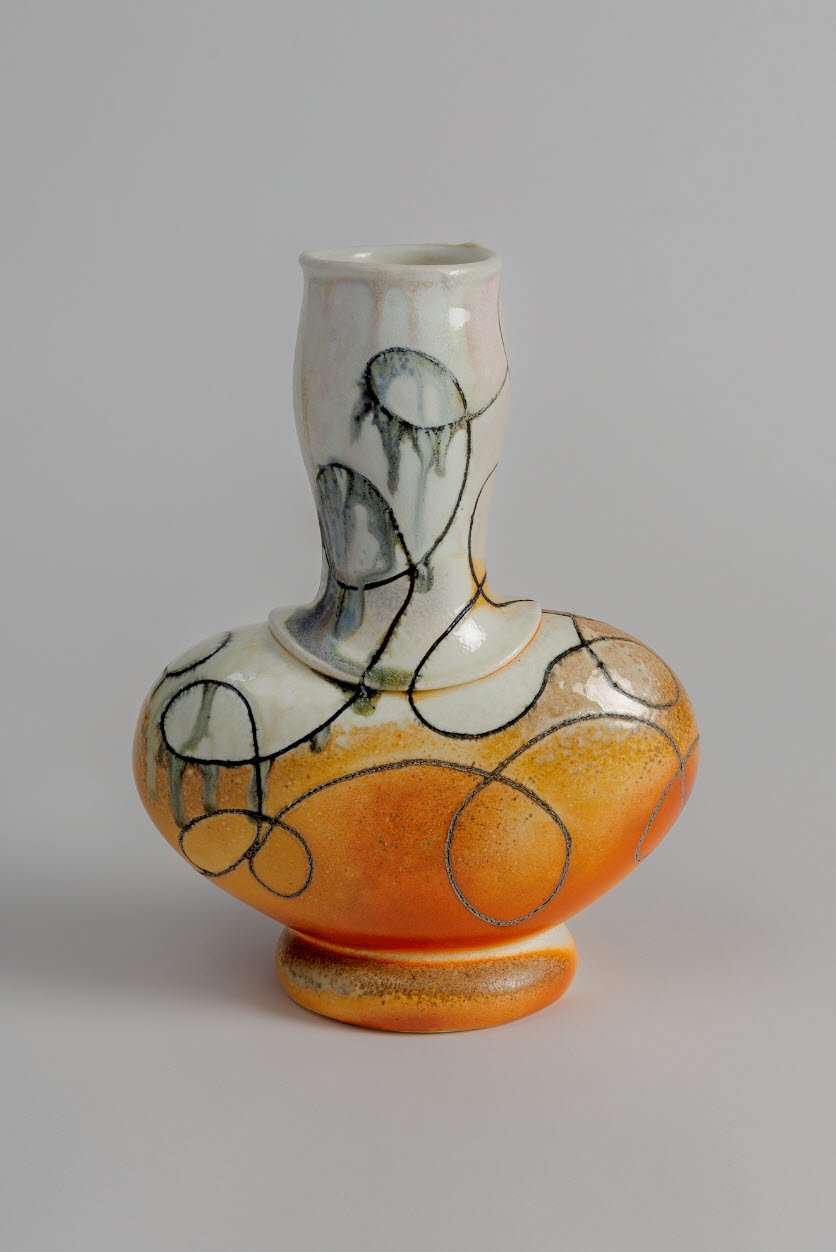
About the Artist
Barbara Frey has a BFA in Ceramics from Indiana University and an MFA from Syracuse University. She taught ceramics for 40 years at SUNY-Oswego and Texas A&M University-Commerce, retiring in May 2018. She received the 2013 NCECA Excellence in Teaching Award in recognition of a career devoted to teaching ceramics.
Her work has been widely exhibited and published and is included in many public and private collections, including the Ichon World Ceramic Center, Kyonggi Province, Korea; the de Young Museum, San Francisco; The San Angelo Museum of Fine Arts; the Museum of Texas Tech University; The Racine Art Museum, Racine, WI; the Kohler Company corporate collection; the John Michael Kohler Arts Center permanent collection, Sheboygan, WI; the Everson Museum of Art, Syracuse, NY; and The Kamm Foundation Teapot Collection. Her work may be viewed at barbarafreyceramics.com.
Artist’s Statement
A simplified view of the experience of art is that it functions as a fusion of the known and the unknown. It offers a base of familiarity from which to launch an enquiry that can lead to a new perspective on some aspect of human experience. The ceramic vessels in this exhibition have that element of familiarity simply because they can be located within the functional vessel vocabulary of useful containers. But what do they contain? My intent is that they function as containers for my response to the environment as I move through it, referencing particular places and times, past and present.
We were free-range children, growing up in the woods and the creek, raised as little naturalists. My impulse from an early age was hunting and gathering and my pockets were filled with objects such as rocks, fossils, and acorns as well as other “treasures” from the dump in the ravine that we were expressly ordered to stay away from! That impulse continues today as I take my walks. I still find myself paying attention to and picking up things that most would consider “trash.” The series of “Walk” and “Fossil” tumblers preserve these castoff remnants, the detritus of the manufactured world, in combination with found natural objects. Through preservation I assign new value and importance to the overlooked.
The other series of vessels are inspired by the rocks I collect as I walk the shores of Lake Ontario. The lake shore has much to offer but I am specifically attracted to beautifully rounded oval rocks, almost spherical rocks, and heart shaped rocks. Formed over geologic time by the grinding action of the glacier, they were subsequently refined and polished by the tumbling action of the waves in the lake. My interest lies in being responsive to these forms that nature has created and I have selected. This vantage point of recognition and responsiveness is very different from the design procedure that often initiates the creative process. It is important to me that I find the forms I want to use, not think of them or visualize them. Once found, I can use these rocks as temporary supports for forming soft clay slabs. These solid rocks are thus given a second life as hollow vessels.
All the work in this exhibition has been fired in a wood kiln. I have been a ceramic artist for many years but my focus on wood firing is quite recent, beginning in 2018. There are many firing choices available for finishing ceramic objects and wood firing has its own unique challenges and rewards. I am enjoying having a collaborative relationship with the kiln, knowing that the choices of color and texture I have made in preparing the surface have only established possibilities, parameters of chance for the flow patterns of wood ash, mineral vapors, and sodium carbonate. A 360-degree rotation of any of these objects reveals variations, both subtle and dramatic, that result from the kiln’s decisions, not mine. I liken it to shifting weather systems that ebb and flow across the landscape. That reference seems particularly appropriate due to the origins of these pieces in my response to the environment.
-Barbara Frey
